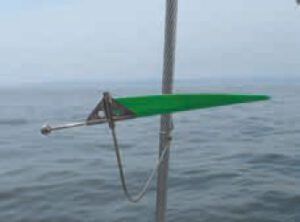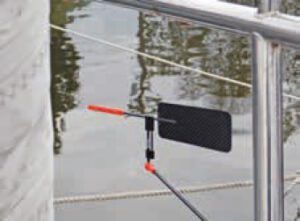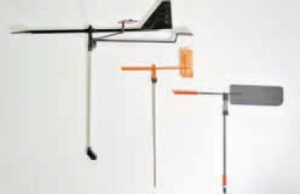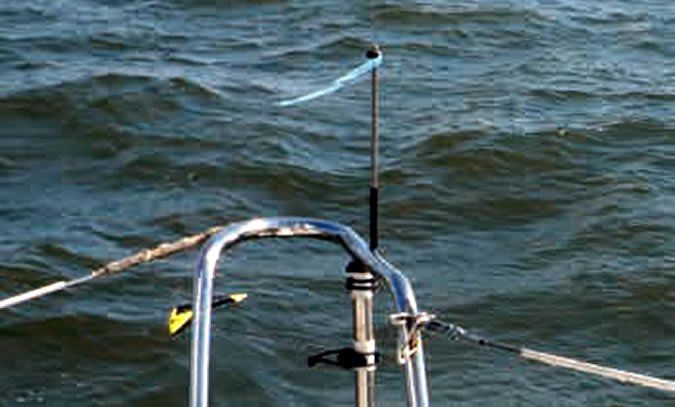For more than 20 years, I always had bow-mounted vanes-a Telo Cat on my beach cat and a Windex sport on my Stiletto 27. The Telo Cat was sheltered under the forestay bridle and bowsprit and was never damaged. The long bows of the Stiletto kept the Windex out of harm’s way-although the Stiletto had a spinnaker, it reached faster than the wind and we always tacked downwind, jibing the chute inside like a jib and keeping the sail and sheets away from the bows. When I moved on to a PDQ32 catamaran, a cruising cat with a chute that is jibed outside, there was no place where either a sail or sheet couldn’t pulverize the vane in short order. I learned this the hard way, crumpling several commercial vanes. The solution was not to build something strong, but rather to build something that could flex with the assault and pop back up; a flexible wand topped with a length of yarn.

Mine is made from a few lengths of fiberglass tent pole from a child’s backyard tent and 3 inches of polyethylene airline tubing for pneumatic tools, although surely there are many possible variations. The basic elements are a short length of pole that can be clamped to a bow rail, a hinge created with a few inches of stiff but flexible tubing, and an 8- to 12-inch wand that can be knocked flat, only to pop up again. The yarn (wool or wool/acrylic blend) and cable ties are replaced annually, and the tubing every five years, as needed.

The do-it-yourself wind indicator has proven indestructible, having been flattened by the chute thousands of times during five years of cruising. It is not perfect. It is not as responsive or sensitive as the mini-vanes, it is harder to gauge the wind direction because of the droop, and the yarn can become wrapped around the vane (threading the yarn through the center of the wand, rather than attaching it with cable ties helps).
Drew Frye is a longtime PS tester and the author of Circumnavigating the Delmarva Peninsula. The book is available through his website, www.sail-delmarva.blogspot.com, where he blogs about his sailing equipment research and adventures on the Chesapeake.






































